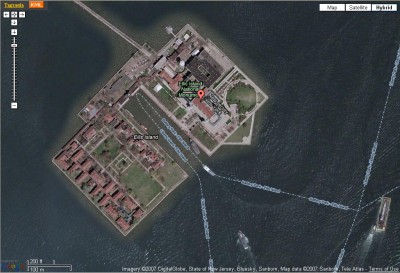Over the last few days, we’ve been working on collaborative renditions of the Statue of Liberty. I provided various options for the format and medium you could choose to use, depending on the message you were trying to communicate to someone who might read your visual image.
Some of you chose to create your art-piece in 2 dimensions–either using the computer and various software programs we have available in the classroom or by using digital photos, paints, markers, torn paper, colored pencil, and/or stickers, etc. Others opted for 3-dimensional versions of the Statue of Liberty using flour dough clay, fimo, paper mache, and/or found objects, etc.
We’ve learned a lot from our explorations about immigrations, our reading of The Arrival, and our discussions. We’ve learned that 1+1 does not have to equal 2. We’ve learned that questions need not be limited to one answer. We’ve learned that visual literacy is largely a matter of considering questions and the answers are made richer by things we learn from each other.
Today and tomorrow we will be finishing up our art projects, and we will be sharing them with the world via the Artsonia Kids Art Museum (http://www.artsonia.com/). 2-dimensional projects will be scanned and uploaded to the Artsonia website, and 3-dimensional projects will be photographed, scanned, and then uploaded.
By sharing your art with the world, who knows who might read it. I consider discovering Shaun Tan’s book, The Arrival a serendipitous event. Perhaps someone who discovers your collaborative and synergistic work of art in the Artsonia Museum will consider it serendipity, as well.
Homework
- I have handed out a letter to your parents and a permission form for your participation in Artsonia (I downloaded these forms at http://www.artsonia.com/teachers/docs/.) Make sure your parents sign your permission form and bring it to class tomorrow.
- If there are materials from home that you need to finish up your art project, please be sure to bring these to class next time.
- Explore the Artsonia website at http://www.artsonia.com/. If a parent signs you up for an account at home, bring your log-in information to class–please still bring the permission form to class, though.
- In the comment section below, provide 1 link to a work of art you found on Artsonia that you found compelling. Also, write 1-2 questions you asked yourself while reading this art-piece.
–Silver Lisa
P.S. Talk about serendipity! A teacher in New York (Ms. M. Edinger) decided to teacher her 4th graders about immigration and The Arrival. Somehow, Shaun Tan found out about this and visited her classroom! If you’re interested, Ms. Edinger has 2 blogs you can explore that discuss this exciting stroke of luck:
- “Educating Alice (Search results for blog entries related to ‘The Arrival’).” http://medinger.wordpress.com/?s=the arrival&searchbutton=Go%21 and
- “Edinger House (Results for Blog Entries Tagged as ‘The Arrival’).” http://blogs.dalton.org/edinger/category/the-arrival/.












